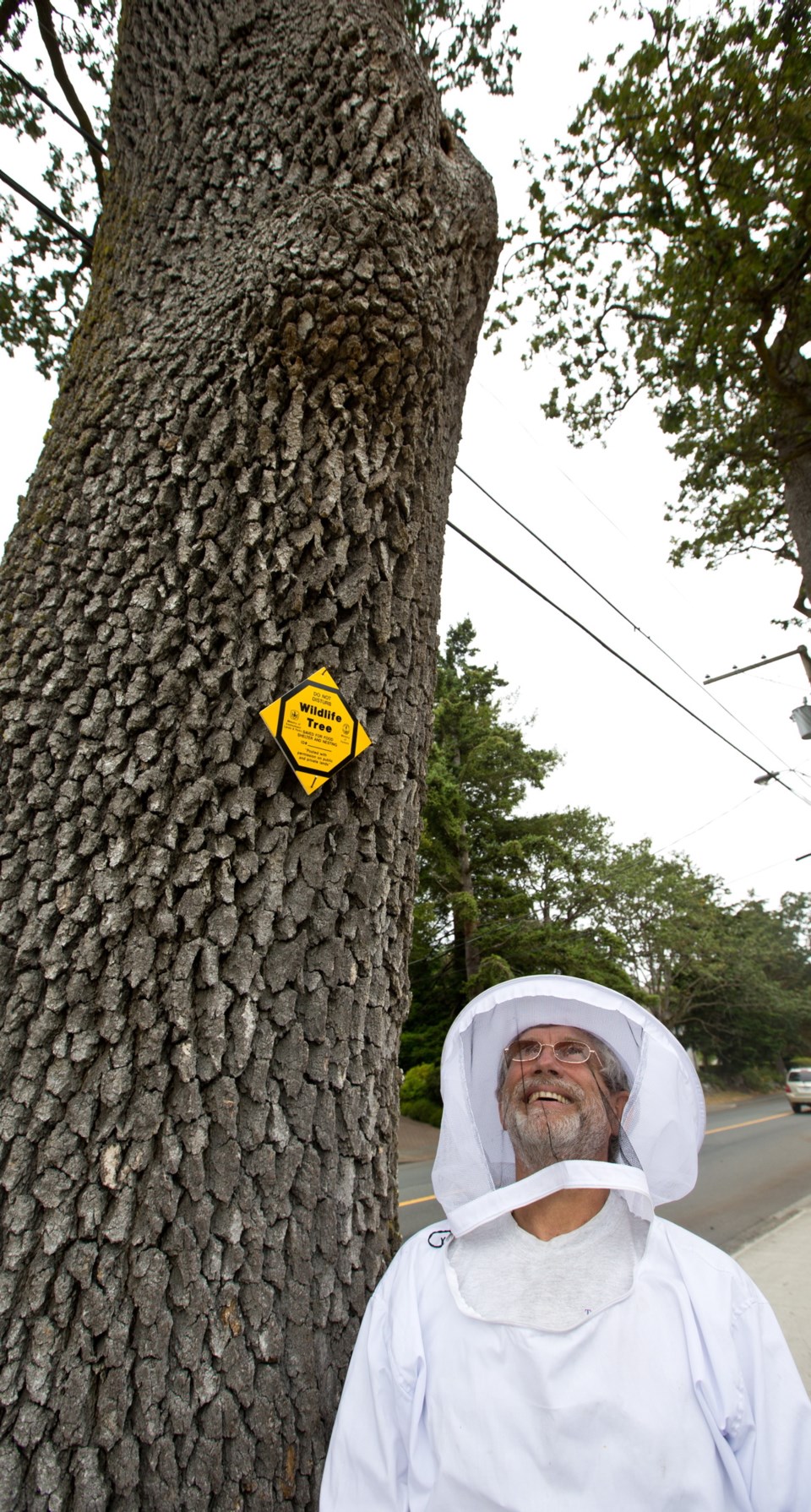When city worker Michael Wilson responded to a call to remove a wasp nest from a Garry oak tree on Richmond Avenue, he was surprised to find honeybees buzzing in a hollow notch.
“From what I understand, it’s quite rare,” said Wilson, an environmental field technician for the City of Victoria.
Wilson said there used to be as many as 30 such wild hives around Victoria, but many have been wiped out over the past several years.
Beekeepers across North America have suffered catastrophic losses, with as many as 90 per cent of their bees dying each winter. Diseases, parasites such as the varroa mite and pesticides are thought to be behind the declining numbers.
“We’re going to leave the hives when we can to try to educate the neighbourhood and tell them it’s a good thing,” said Wilson, affixing a small yellow wildlife tree sign to the bees’ home.
He advises residents to call the city about colonies rather than destroy them. “They are such important pollinators,” he said.
View Royal beekeeper Barry Denluck estimates that the tree holds about 5,000 bees and a small amount of wax and honey — even though he thinks it has been there only about a week.
The colony is likely the result of a swarm, said Denluck, a well-known swarm-buster.
Swarms happen when a part of a colony breaks off to form a new group in a new home. They can contain thousands of bees, be as big as a two-car garage and buzz as loudly as a passing bus, Denluck said. (Though they look and sound intimidating, swarming bees are quite calm.)
Denluck recently cut open a wall on a Princess Avenue house and found one large colony inside the dining room ceiling of a home on Shelbourne Street.
“You could see the bees coming and going through a hole,” he said. “There must have been more than 10,000 bees.”
Denluck said he often gives the honey back to the homeowners and relocates the bees, taking them to farms on the Saanich Peninsula. “The farmers are saying they’re now starting to see an increase in local bees,” he said.
There are hundreds of beekeepers in Greater Victoria with two or three hives each, but maybe only 50 to 100 feral colonies, Denluck said.
“I only know of about 10 myself,” he said, including a large one inside a B.C. Hydro power pole on the corner of Rockland Avenue and Moss Street.
Denluck said the public has become more sympathetic to the plight of bees, which are crucial to food production and agriculture. The growing popularity of hobby beekeeping has also helped.
“We do still have about 40 to 50 per cent winter loss,” he said, noting only about 10 per cent of bees should die each cold season.
Denluck thinks the West Coast’s wet, cold winters also play a role in the decline. He has designed a hive specifically for Vancouver Island weather.
“If you can keep it warm and get a draft through it, the excess moisture flows out.”
About bee swarms
What is a swarm?
A swarm is a group of settler bees, heading out to find a new home. There will be a queen at the centre and thousands of female workers around her. Hundreds of other bees will be acting as scouts.
A swarm will move as a big cloud of thousands of bees, buzzing very noisily. They will settle on something (usually a tree, but it could be anything, even open ground). When they do, they will form a solid mass of bees about the size of a football and sometimes much larger.
Is a swarm dangerous? Can I get stung?
Not usually, but possibly. A swarm is much more interested in finding a new home than in stinging you. And normally the bees are gorged on honey and quite calm. But they get testy if they have been out in the open for a few days, so it’s better not to get too close.
If you see a swarm
Local beekeepers will try to find a new home for the bees.
• Capital Region Beekeepers’ Association: 250-900-5787 or [email protected]
• Barry Denluck: 250-900-5133 or [email protected]
Source: Capital Regional Beekeepers’ Association



